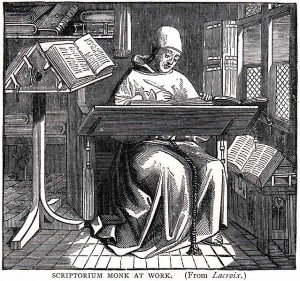 This is the second post on this topic. Good to see you back for more! Based on all of the notes that I received following my first post, the readership levels of this site are much higher than I expected. Thanks for all of the kind feedback and responses.
This is the second post on this topic. Good to see you back for more! Based on all of the notes that I received following my first post, the readership levels of this site are much higher than I expected. Thanks for all of the kind feedback and responses.
I think that some of my former colleagues over at Stark Investments are thinking that they created a blogging monster (while at Stark I maintained a blog and I bet that some are thinking that I have taken things to a new extreme….). While on that topic, I did want to mention a couple of tidbits about Stark Investments (it seems that some folks are still interested in what I have to say on the topic).
The original founders of Stark – Brian Stark and Mike Roth – were true pioneers in the hedge fund industry and played an important role in the evolution of this space and in paving the way for all those that followed into the business (including myself). At its core, the hedge fund business (or “alternatives business” as it is commonly referred to) is based on the goal of providing absolute returns in an uncorrelated fashion (providing more attractive risk-adjusted returns than can be found from other investment techniques and strategies). As they say about sports and hitting a baseball, achieving these objectives is one of the hardest things to do in any profession. In any event, Brian and Mike have been doing this as long as anyone in the business. I had a great 10 years working for the two of them and I learned much from both of their styles.
Ok, enough of that stuff. Let’s talk about financial regulation. The last major overhaul of the regulatory structure of our financial markets, not surprisingly, occurred following the Great Depression. The regulatory reaction to the stock market crash was the adoption of two cornerstone pieces of legislation which still provide the backbone of our regulatory structure — the Securities Act of 1933 (the “’33 Act”) and the Securities Exchange Act of 1934 (the “34 Act”). The 33 Act, administered by the then newly created Securities & Exchange Commission (the “SEC”), provides for the registration of the initial distribution of most securities and the 34 Act imposes ongoing reporting and disclosure requirements.
The policy behind the Acts was that disclosure of material facts and overall transparency in the activities of the securities exchanges would provide confidence in the markets and in the companies issuing securities. Increased transparency, in turn, would promote much-needed liquidity which makes the markets function in an orderly fashion (the pre-Depression markets were characterized by insider dealing and a significant laissez-faire attitude towards regulation). This “sunlight theory of regulation” is based on the assumption that if investors are given all of the necessary information they will make wise investment decisions. Commentators have characterized the ’33 Act as follows (these quotes, some of my personnel favorites, can also be found on the State of Wisconsin Department of Financial Institutions website):
- Congress did not take away from the citizen his inalienable right to make a fool of himself. It simply attempted to prevent others from making a fool of him.
- As to its efficacy in regulating securities issuers, the sunlight theory may be summed up by a saying: Those who are forced to undress in public will presumably pay some attention to their figures.
Please remember these quotes because I believe that they are instructive in thinking about the role of regulation in light of the current environment. Notably, it is my view that “full and fair disclosure” was not a major problem during our most recent financial crises – in my mind, the much bigger issue (as noted in my first blog) was excessive risk-taking and greed: in short, too many people made fools of themselves….
My father recently guided me to some sections of Tony Blair’s newly released memoirs A Journey: My Political Life, which were of interest to me on the topic of financial regulation. The Prime Minister had this to say of the markets, government and regulation:
First, “the market” did not fail. One part of one sector did. The way sub-prime debt was securitized, spliced and diced and sold on with no real appreciation of underlying risk or value was wrong, irresponsible and immensely damaging. Some of the rewards, the huge payouts for shuffling around securities, the bonuses, are not just presentationally awful; they can’t be justified and, at worst, have helped create a propensity to “do the deal” whatever the long-term merits for short-term gain, in a way that significantly contributed to the crisis. All this is correct and should be acted on. However, such practice should not define or represent the whole of the banking sector, let alone the whole financial sector, let alone “the market.”
Second, government also failed. Regulations failed. Politicians failed. Monetary policy failed. Debt became way too cheap. But that wasn’t a conspiracy of the banks; it was a consequence of the apparently benign confluence of loose money policy and low inflation. The responsibility for the crisis should be shared, not borne by the market alone or even by the banks alone.
Third, the failure was one of understanding. We didn’t spot it. You can argue we should have, but we didn’t. Furthermore—and this is vital for where we go now on regulation—it wasn’t that we were powerless to prevent it even if we had seen it coming; it wasn’t a failure of regulation in the sense that we lacked the power to intervene. Had regulators said to the leaders that a huge crisis was about to break, we wouldn’t have said: There’s nothing we can do about it until we get more regulation through. We would have acted. But they didn’t say that.
My own beliefs flow from a similar line of thinking. That is, our financial system has failed by not having a natural governor of its activities. One of the interesting ironies, in my experience, is that during the creation of bubble-like conditions all of the players in the financial system act as if their interests are aligned. Investors, speculators, bankers, and policy-makers all tend to act in a manner that is designed to “let the good times roll.” The markets need a voice of reason in these environments – someone or something that can provide balance in recognizing the signs of a bubble, in recognizing where we are in terms of the investment cycle, in acting as a counter-balance to the “this time its different” mentality, and in ensuring prudent action during these periods. If we do not find a way to do this then we will repeat these cycles – and in my mind they will occur with even more frequency and ferocity.
So, it will be in the next blog post where I will discuss whether the currently proposed regulatory overhaul can help mitigate against these risks. That is, can the prevention of “too big to fail,” increased capital ratios among large banks, and the 2,315-pages of financial regulatory system legislation act as the “voice of reason” which will prevent future financial crises….and what does this all mean from an underlying policy perspective?
 In my earlier post on the long running debate about the proper emphasis of legal education, I wanted to suggest that there is more of a symbiotic relationship between practice and preaching.
In my earlier post on the long running debate about the proper emphasis of legal education, I wanted to suggest that there is more of a symbiotic relationship between practice and preaching.

